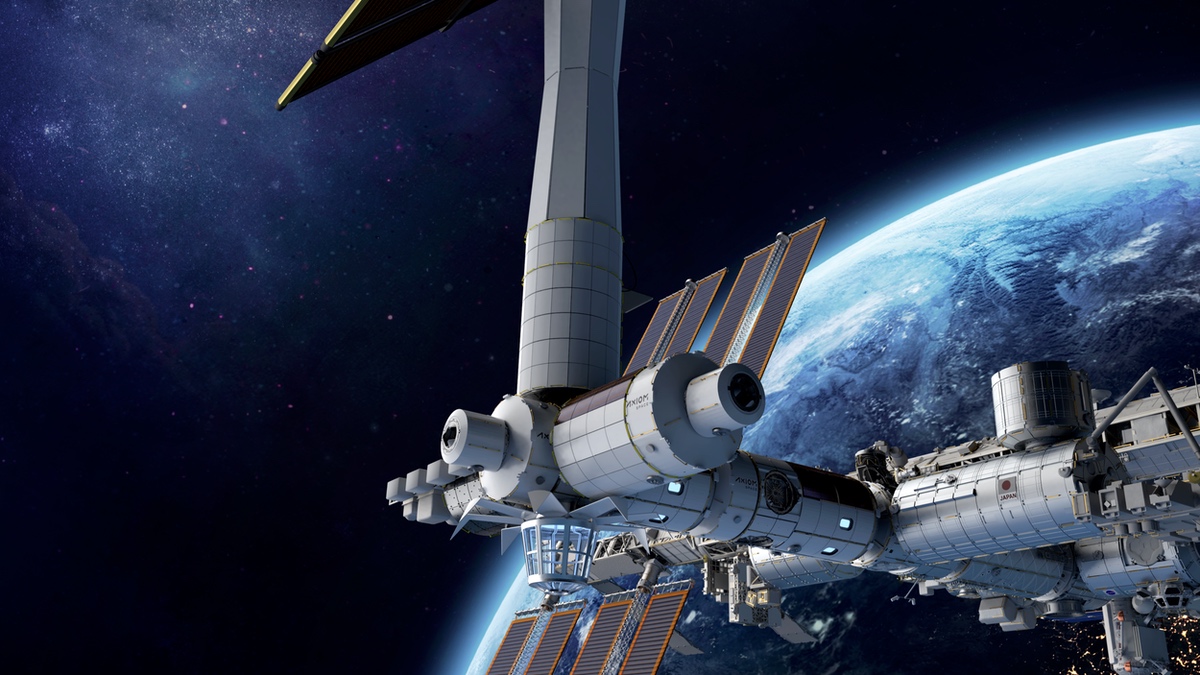
WASHINGTON — NASA has released additional details about how it plans to use commercial space stations after the retirement of the International Space Station as some in industry seek to accelerate NASA’s support for them.
NASA published two white papers Feb. 13 as part of a request for information (RFI) for its Commercial Low Earth Orbit Destinations effort to support development of commercial stations. The documents provide new details about how NASA expects to work with companies operating those stations and the agency’s needs to conduct research there.
One white paper lists NASA’s anticipated resource needs for those stations, including crew time, power and volume, broken out for each of the major agency programs anticipated to use commercial stations. Companies had been seeking more details about NASA requirements to assist in the planning of their stations.
“The utilization document is critically important because it contains a vetted and quantified list of potential utilization needs to help guide industry size and outfit their concepts,” Phil McAlister, director of commercial space at NASA Headquarters, said in a statement accompanying the RFI. He added that while NASA doesn’t expect commercial stations to provide all the capabilities identified, the agency wanted to give companies “an idea of the type, and scope, of equipment and facilities we have used on station in the past and what we might need in the future.”
Overall, including resources expected to be reserved for a successor to the ISS National Laboratory, NASA expects to require 3,000 to 4,000 hours of crew time a year, which NASA expects to provide through having two astronauts on a commercial station. The agency stated, though, that it is open to having private astronaut carry out some of the research activities.
NASA says it expects to conduct 130 to 230 experiments a year, using up to 24 cubic meters of storage. It anticipates internal experiments and equipment needing 42 kilowatts of power, while five to eight external locations for experiments would need an additional five to eight kilowatts. NASA anticipates needed to transfer 5,000 kilograms of cargo up to commercial stations and return 2,000 kilograms of cargo.
The second white paper outlines the concept of operations NASA envisions for its use of commercial space stations. The 40-page document described in detail what it expects from such stations in terms of capabilities, resources and operations, as well as what oversight the agency anticipates having.
The document notes, as one example, that it will not require commercial space stations to have an airlock and be able to support spacewalks. It adds, though, that such capabilities can be valuable for repairing and retrieving external payloads and that, without them, commercial providers should offer alternatives for installing external payloads.
NASA expects its astronauts on commercial space stations will work alongside commercial astronauts, including those employed by the station’s owner. Those commercial astronauts, NASA envisions, will be primarily responsible for station maintenance, but NASA said it expects some sharing of those tasks, noting “crew cohesion can be negatively affected” if they are not shared.
The two documents, NASA said in the RFI, are intended to help companies as they work on their commercial space station concepts and “maintain open communications with the private sector.”
NASA is currently working with four companies that have proposed commercial stations. Three teams, led by Blue Origin, Nanoracks and Northrop Grumman, won funded Space Act Agreements in late 2021 through the Commercial LEO Destinations program to work on their station concepts. Axiom Space has a separate agreement with NASA to allow it to install commercial modules on the ISS that will be the precursor for a standalone commercial station.
One executive, though, said that NASA needs to narrow down that list. “We’re concerned that, with four competitors in game for very much longer, we’re just diluting what is only a nascent market, if there is a market,” said Mary Lynne Dittmar, chief government and external relations officer at Axiom Space, during a panel at the Federal Aviation Administration Commercial Space Transportation Conference Feb. 9.
That dilution, she argued, would ultimately delay the development of commercial stations. “We’re worried that, without very clear milestones for downselect and consolidation, we’re actually going to extend the period of time it takes to get thigs on low Earth orbit after ISS,” she said. “We have some concerns about that approach.”
That comes as China operates its Tiangong space station and solicits payloads from other countries, including through the United Nations Office of Outer Space Affairs. “We’ve already got U.S. folks who are running companies interested in LEO who have been losing customers to the Chinese space station,” she said.
However, Kathy Lueders, NASA associate administrator for space operations, gave no indication on the panel that NASA would accelerate any plans to downselect to a smaller number of station providers.
“I appreciate Mary Lynne’s comments,” she said, but added that the agency was still trying to understand how it can use commercial stations to meet its exploration and research needs currently served by the ISS.
“We still need to know how to do commercial LEO destinations,” she said, including technical and regulatory issues. “This is really the time where we need to be listening.”
Related
ncG1vNJzZmiroJawprrEsKpnm5%2BifK%2Bt0ppkrqiUlsGmv4ypo5qmo2KzsL6MrqqeZZ%2BbeqS7zKacq5uZlrluv8%2Bamp5lo6mutbXOp6po